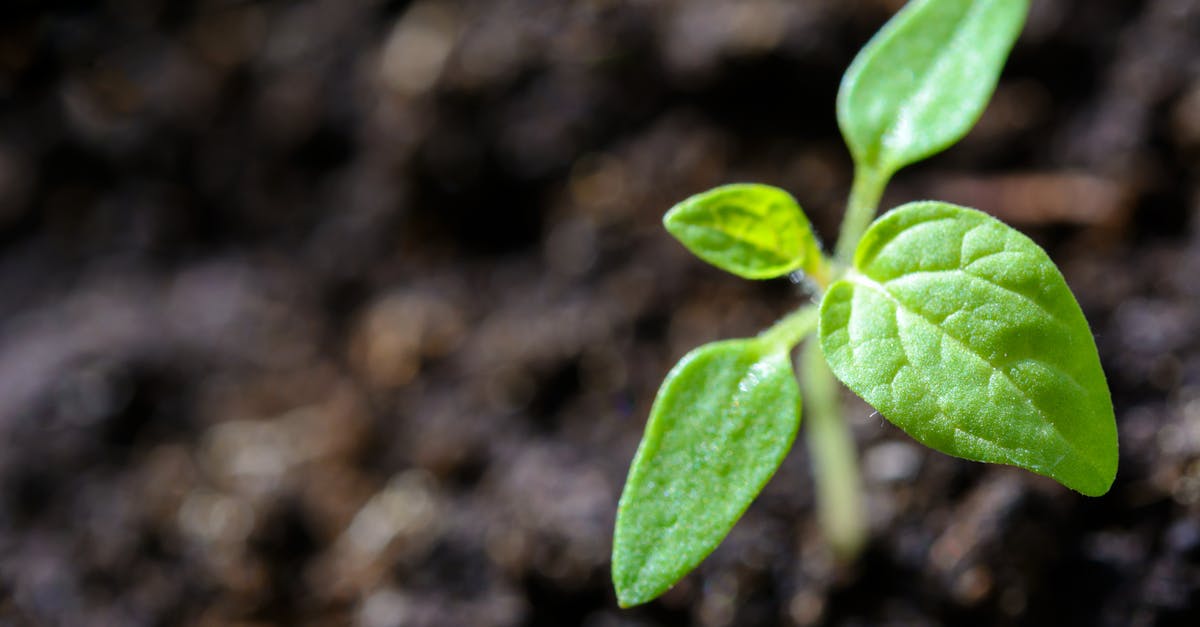Unlocking the Secret: Soil pH for Bountiful Blooms

The Importance of Soil pH for Optimal Flowering
Soil pH is one of the most critical factors for healthy, vibrant flowering plants. It directly impacts nutrient availability, root development, and overall plant health. Maintaining optimal pH levels in your soil is essential for maximizing flower production and ensuring your blooms thrive.
Understanding the Role of Soil pH
The pH scale measures the acidity or alkalinity of a substance, and soil pH ranges from 0 to 14. A pH of 7 is neutral, while values below 7 are acidic and those above 7 are alkaline. Most flowering plants prefer slightly acidic to neutral soil pH levels, typically between 6.0 and 7.0. In this range, essential nutrients like nitrogen, phosphorus, and potassium are most readily available to plants.
Testing and Adjusting Soil pH
The first step in managing soil pH is to test your soil. There are various soil testing kits available that provide accurate results. Based on the test results, you can determine if your soil needs to be adjusted. To increase pH, lime is commonly used, while sulfur is used to lower pH. It’s crucial to adjust pH gradually and retest the soil to monitor changes and prevent overcorrection.
1. The Significance of Soil pH for Thriving Blooms
The Significance of Soil pH for Thriving Blooms
Soil pH is a crucial factor for the health and vitality of flowering plants. It directly impacts nutrient absorption, root development, and overall plant growth. Understanding the relationship between soil pH and flowering plants is essential for creating an optimal environment for abundant blooms.
Nutrient Availability
Soil pH plays a significant role in nutrient availability. Most flowering plants prefer slightly acidic to neutral soil pH levels (between 6.0 and 7.0) because essential nutrients like nitrogen, phosphorus, and potassium are most readily available in this range. When soil pH is too acidic or alkaline, nutrient uptake can be hindered, leading to nutrient deficiencies and poor plant growth.
Root Development
Soil pH also affects root development. Plant roots absorb water and nutrients from the soil, and optimal pH levels promote healthy root growth. In acidic soils, aluminum toxicity can occur, damaging root tips and inhibiting root growth. Conversely, in alkaline soils, iron and manganese can become less available, leading to poor root development and reduced nutrient uptake.
2. Assessing Your Soil’s pH: Essential Tools and Techniques

Assessing Your Soil’s pH: Essential Tools and Techniques
Testing your soil’s pH is crucial for understanding its chemical composition and determining if adjustments are needed for optimal plant growth. Here’s a comprehensive guide to the essential tools and techniques for accurate soil pH testing:
Soil pH Testing Kits
There are various soil pH testing kits available, ranging from basic litmus paper tests to more advanced digital meters. Litmus paper tests are simple and inexpensive, but they provide only a general indication of pH. Digital meters offer more precise results and are relatively easy to use. Choose a kit that is appropriate for your gardening needs and budget.
Step-by-Step Instructions
To obtain accurate pH results, follow these steps:
- Collect a representative soil sample from several spots in your garden.
- Remove any debris or plant material from the sample.
- Mix the soil thoroughly to create a uniform sample.
- Follow the instructions provided with your chosen testing kit to determine the pH level.
Interpreting Results
Once you have your pH results, you can interpret them using the following guidelines:
- pH below 7: Acidic soil
- pH between 7 and 8: Neutral soil
- pH above 8: Alkaline soil
Most flowering plants prefer slightly acidic to neutral soil pH levels (between 6.0 and 7.0). If your soil pH is outside of this range, you may need to adjust it to create optimal conditions for your plants.
3. Adjusting Soil pH for Ideal Flowering Conditions
Adjusting Soil pH for Ideal Flowering Conditions
Once you have determined your soil’s pH, you can adjust it to create optimal conditions for your flowering plants. Here’s a guide to using soil amendments to effectively modify pH levels:
Raising pH (Making Soil Less Acidic)
To raise soil pH, you can add lime. Lime is a natural substance that contains calcium carbonate, which helps neutralize acids in the soil. Apply lime according to the manufacturer’s instructions, and retest your soil after a few weeks to ensure the desired pH level has been reached.
Lowering pH (Making Soil More Acidic)
To lower soil pH, you can add sulfur. Sulfur is an elemental form of sulfur that oxidizes in the soil to produce sulfuric acid, which lowers pH. Apply sulfur according to the manufacturer’s instructions, and retest your soil after a few weeks to ensure the desired pH level has been reached.
Other Soil Amendments
In addition to lime and sulfur, there are other soil amendments that can help adjust pH levels. Organic matter, such as compost or peat moss, can help buffer pH changes and improve soil health overall. Wood ash can also be used to raise pH, but it should be used sparingly as it can contain high levels of salts.
Remember to test your soil regularly to monitor pH levels and make adjustments as needed to maintain optimal conditions for your flowering plants.
4. Maintaining Optimal pH Levels Over Time
Maintaining Optimal pH Levels Over Time
Once you have adjusted your soil pH to the desired range, it’s important to maintain those levels over time to ensure the health and vigor of your flowering plants. Here are some ongoing practices to help preserve optimal pH levels:
Mulching
Mulching is a great way to maintain soil pH levels. Organic mulches, such as compost, bark chips, or straw, help regulate soil temperature and moisture, which can influence pH levels. Mulch also helps prevent erosion and leaching, which can carry away essential nutrients and alter soil pH.
Crop Rotation
Crop rotation is another sustainable practice that can help maintain soil pH levels. By rotating different types of plants in your garden each season, you can prevent the soil from becoming depleted of specific nutrients and help balance pH levels over time.
Cover Crops
Planting cover crops during the off-season can help protect the soil from erosion and nutrient loss. Cover crops also help improve soil structure and organic matter content, which can contribute to maintaining optimal pH levels.
Regular Soil Testing
Regular soil testing is essential for monitoring pH levels and making adjustments as needed. Test your soil every few years, or more often if you notice any changes in plant growth or health. This will help you identify any potential pH imbalances and take steps to correct them before they become a problem.
5. Troubleshooting Common Soil pH Issues for Flowering Plants
Troubleshooting Common Soil pH Issues for Flowering Plants
Soil pH imbalances can lead to a variety of problems for flowering plants, including nutrient deficiencies, poor root growth, and stunted growth. Here are some common symptoms of pH imbalances and effective solutions to restore optimal conditions:
Acidic Soil (pH below 7)
- Symptoms: Yellowing leaves, stunted growth, poor flowering
- Solution: Add lime to raise the pH. Start with a small amount and gradually increase until the desired pH is reached.
Alkaline Soil (pH above 7)
- Symptoms: Brown or yellow leaves, poor root growth, iron deficiency
- Solution: Add sulfur to lower the pH. Start with a small amount and gradually increase until the desired pH is reached.
Nutrient Deficiencies
Soil pH can affect the availability of nutrients to plants. For example, in acidic soils, aluminum toxicity can occur, which can interfere with phosphorus uptake. In alkaline soils, iron and manganese can become less available. If you suspect a nutrient deficiency, test your soil to determine the specific nutrient that is lacking and apply the appropriate fertilizer.
Poor Root Growth
Extreme soil pH levels can damage root tips and inhibit root growth. This can lead to stunted growth and reduced nutrient uptake. To improve root growth, adjust the soil pH to the optimal range for your plants and consider adding organic matter to the soil to improve soil structure and drainage.
6. Resources and External Links for Further Exploration
Resources and External Links for Further Exploration
To further expand your knowledge about managing soil pH for optimal flowering, here’s a curated list of reputable sources:
University Extension Programs
- University of California Cooperative Extension: Soil pH Management for Home Gardens
- Michigan State University Extension: Soil pH for Plant Growth
- Cornell University Cooperative Extension: Soil pH and Plant Growth
Gardening Organizations
- American Society for Horticultural Science: Soil pH and Plant Growth
- National Gardening Association: Soil pH Basics
- Royal Horticultural Society: Soil pH
Online Forums and Communities
These resources provide a wealth of information, including detailed articles, research findings, and practical tips from experts and experienced gardeners. By exploring these resources, you can enhance your understanding of soil pH management and optimize your gardening practices for beautiful and thriving flowering plants.
Quiz
Question 1: Which of the following is NOT a factor that soil pH affects?
(A) Nutrient availability (B) Root development (C) Plant height (D) Flowering
Question 2: True or False: Most flowering plants prefer alkaline soil conditions.
Question 3: What is the best way to raise the pH of acidic soil?
(A) Add lime (B) Add sulfur (C) Add compost (D) Add sand
Question 4: Which of the following is a common symptom of alkaline soil conditions?
(A) Yellowing leaves (B) Brown leaves (C) Stunted growth (D) Poor flowering
Answer Key
- C
- False
- A
- B
